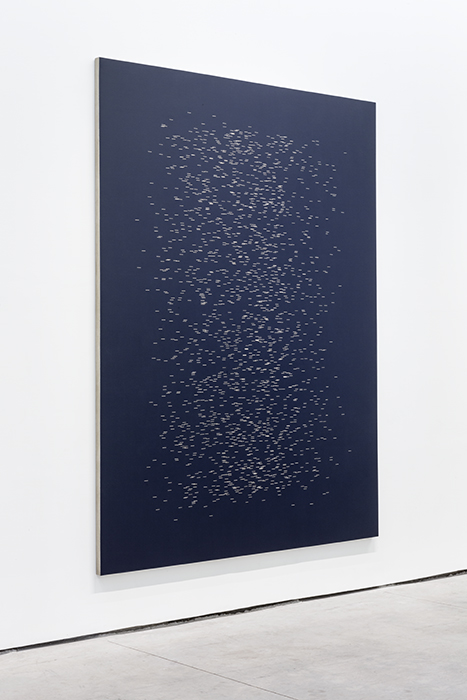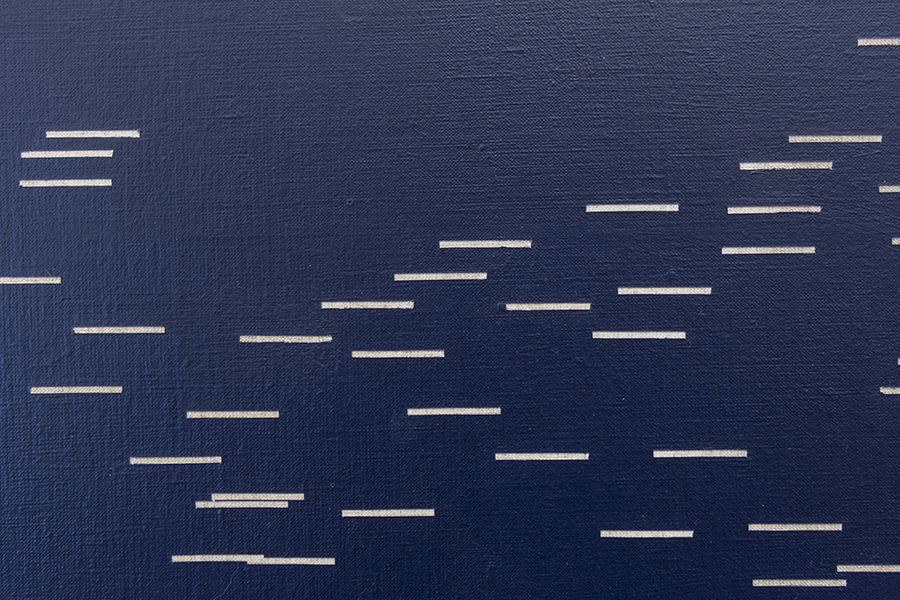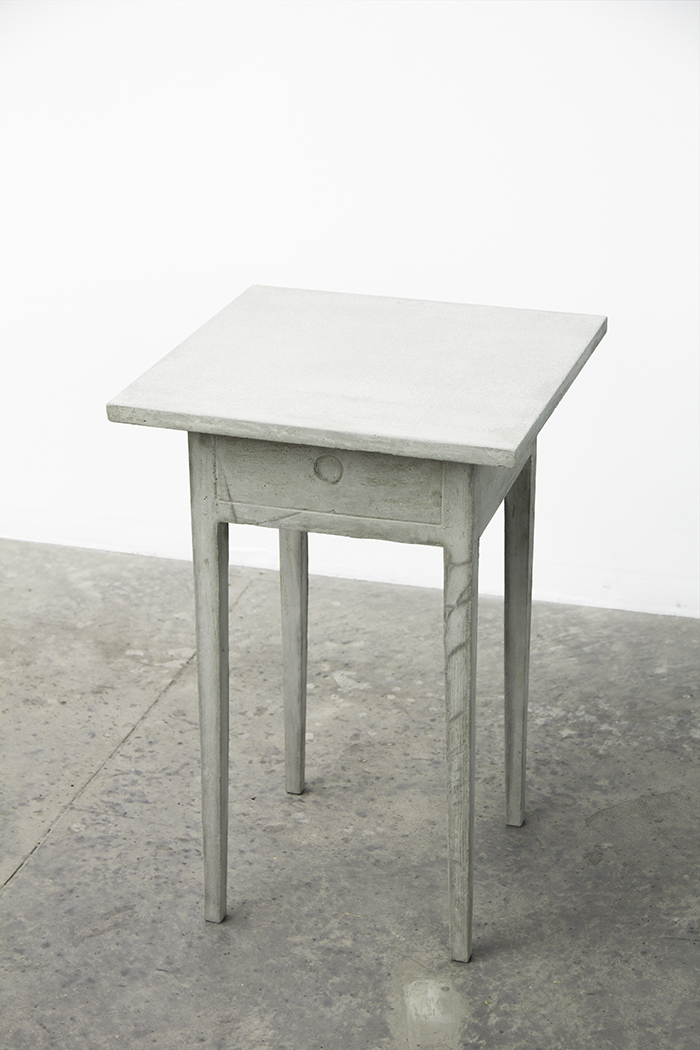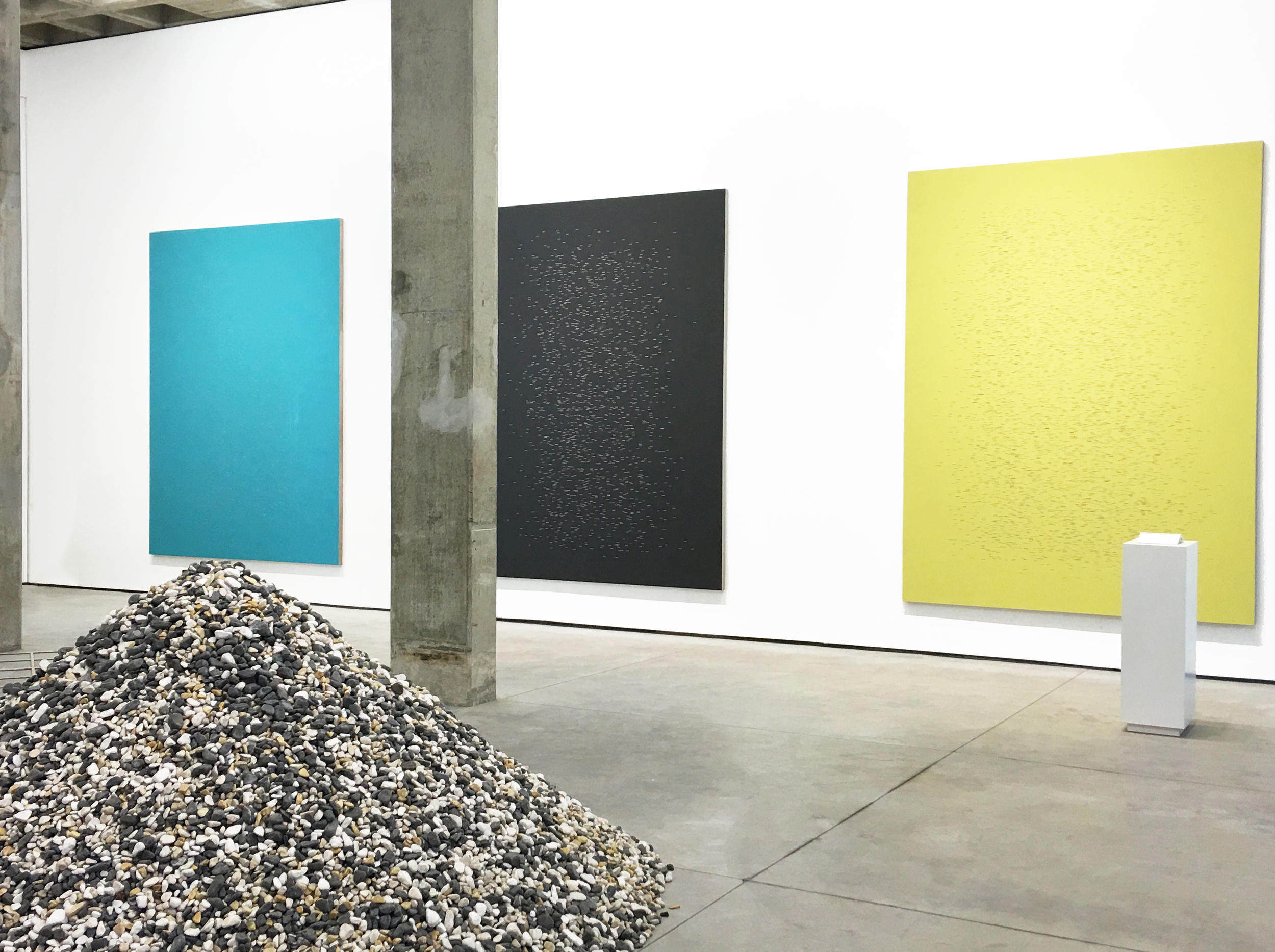
Jorge Méndez Blake. The Art of Loving, 2009. 10 ladrillos, edición de The Art of Loving de Erich Fromm / 10 bricks, edition of Erich Fromm’s The Art of Loving, 24 x 8 x 4 cm. Courtesy of the artist.
Every book creates a world, a place that readers enter through language on the first page, and inhabit thereafter, as the text’s unique character compounds in an individual’s imagination. This happens with novels, with philosophy, mathematical treatises, and poems. How astonishing it is to consider the lush autonomous universe each spine on a bookshelf proposes. Each of those worlds has a logical structure that cajoles a reader into its unique proposition—a situation not so different, perhaps, from that of architecture. The Guadalajara-based multimedia artist, Jorge Méndez Blake, addresses this intersection directly by translating nuanced themes embedded in canonical books into art installations. In our interview, we discuss this process of translation, looking at how it differs from literary criticism, and drifting over the site of Emily Dickinson’s desk.
Caroline Picard: Your installations interpret the work of different authors like Samuel Beckett, Jorge Luis Borges, Emily Dickinson, Franz Kafka, Edgar Allan Poe, Shakespeare, and Jules Verne, by drawing out nuanced themes within a book (or poem) into a single place and time; it is almost like you draw a three-dimensional translation of the book in space. Do you see a connection between what you do and literary criticism?
Jorge Méndez Blake: My approach to books and language is more as a reader than as a critic. I like reading literary criticism, but I’m working from the side of art, and art should propose different ways of understanding literature, not the same ones as critics. Approaching a book through sculpture expands the possibilities of regular literary criticism. I believe some seminal texts of the history of literature have many possibilities of interpretation: there’s nothing new under the sun, but the variations of its shadows are infinite.
CP: How does the space created by a book (and language) differ from or resonate with architectural space?
JMB: A book is content and form. The design of a book corresponds to its page count, fonts, and materials, but none of its exterior qualities can reflect the content properly. In this sense, what we see of a book is very tricky because it can refer to the writer or story, or it can be very abstract. So, the book is like an intermediary between the content and the world. When we see this external information of the book-object combine with the physical particularities of a space, the contents of the book also begin to change.

Jorge Méndez Blake. Librero Werther / Werther Bookshelf, 2009. Acero inoxidable, libros / Stainless steel, books 14 libros / books; 200 x 145 x 30 cm. Courtesy of the artist.
CP: Does that go back to how sculpture can expand literary criticism? I’m still trying to wrap my head around what that means. How do you distinguish interpretation from criticism?
JMB: Criticism implies a certain motivating theory. I think it is not easy to make a difference between theory and criticism since they are closely tied together, but in the end they both provide structured approaches to a text. Interpretation is closer to the everyday reader and doesn’t attempt to get to the author’s meaning; a text can have many interpretations. When I say that sculpture expands criticism, I refer to a different way of reading: one that begins in the eyes, the body, and space; continues with the materiality of the book before understanding the whole text or a fragment (depending on the work); and finally arrives at the reader’s memory of the text once read.

Jorge Méndez Blake. Todos los guiones de Dickinson IV (Poemas 392-530) / All of Dickinson’s Hyphens IV (Poems 392-530), 2016. Acrílico sobre lino / Acrylic on linen; 320 x 240 cm. Courtesy of the artist.
CP: I understand that you recently made a group of paintings featuring the hyphens of Emily Dickinson poems. What was it like, shifting from producing installations to making paintings?
JMB: I was trying to solve a problem: how to translate the idea of concrete poetry into painting.
CP: I feel like the hyphens in Dickinson’s poems impose a typographical breath or embodied rhythm to her text on the page. The hyphens seem like stage directions to me, so I am curious about how you isolate those instructions. It seems like you’re making a connection between the breath and how we see or look at painting.
JMB: I see the hyphens as a way to avoid imposing a unique sense to phrases. I think Dickinson doesn’t use regular punctuation because the hyphens let the reader decide how to continue or finish an idea. She was ahead of her time, producing that kind of interactive poetry.

Jorge Méndez Blake. Todos los guiones de Dickinson IV (Poemas 392-530) / All of Dickinson’s Hyphens IV (Poems 392-530), (Detalle / Detail) 2016. Acrílico sobre lino / Acrylic on linen; 320 x 240 cm. Courtesy of the artist.
CP: The resulting compositions feel very architectural. I know you have a background as an architect; could you comment on that connection? How might a fictional narrative in a book compare to the architecture of a building?
JMB: I think my studies in architecture left in me a particular sense of space. But over the years, I feel more distant from the everyday profession of architecture: construction, engineering, hydraulic installations, and things of that sort. My concern is more with history and theories of architecture, the built landscape, space as a cultural product. In a way, art does something similar: it tries to understand its surrounding world, but the objects and mechanisms throughout art function very differently from those of architecture. Narratives and buildings can be very close—as in Georges Perec’s novel, La vie mode d’emploi (Life, A User’s Manual), or in Kafka’s stories, like “Before the Law,” in which architecture is a stage—but in these examples the stories have a narrative structure similar to the buildings they describe.
CP: Didn’t you reproduce Dickinson’s desk from memory?
JMB: I visited Dickinson’s house in Amherst, Massachusetts, which contains a reproduction of her original desk (the real one is at Yale University). The measurements and some photos of the desk are available online, so I made the concrete reproduction based on this information. More than anything else, the interesting thing about the desk is its size: it’s very small. One can’t imagine how any writing could have been made there.

Jorge Méndez Blake. Escritorio de Emily Dickinson / Emily Dickinson’s Writing Desk, 2016. Concreto / Concrete, 66 x 46 x 46 cm. Courtesy of the artist.
CP: Was being in her house important for you?
JMB: The house has different connotations to me: it is the originating place of some of the most innovative poetry ever written—poetry basically written at night, on this tiny wood surface, in the second-floor bedroom. Dickinson is the paradigm of the writer in isolation, writing about the world beyond the window of her ivory tower—the classic situation [presented by Hannah Arendt] of vita activa versus vita contemplativa.
CP: By presenting the desk in your Mexico City exhibition, it is almost like you conjured it—translating an impression of the author’s home into a material, alternate reality.
JMB: The distance between Amherst and Mexico City was important for me, as were the months between that initial visit to the house and the subsequent exhibition. Distance and time played an important factor in the final decision of the works I showed.

Jorge Méndez Blake. Ventana poniente, Vista de la exposición en la galería OMR, Ciudad de México / West Window, Exhibition view in OMR Gallery, Mexico City. Courtesy of the artist.
CP: I read that a visitor broke the desk because he was trying to photograph your work. It seems ironic, in a way, given that photographs were forbidden in Dickinson’s home, which is why you had to make the desk from memory in the first place. Also, it sounds like something that would happen in a novel.
JMB: Yes, at the opening of the exhibition, a young visitor stepped right into the concrete desk, and it broke into pieces. Apparently he was trying to make a photo and walked back without looking. Even though the material I used is very resistant, it is also heavy, and the slim legs of the desk made the object very fragile. I guess Emily’s ghost was angry because I made such an ugly reproduction!



